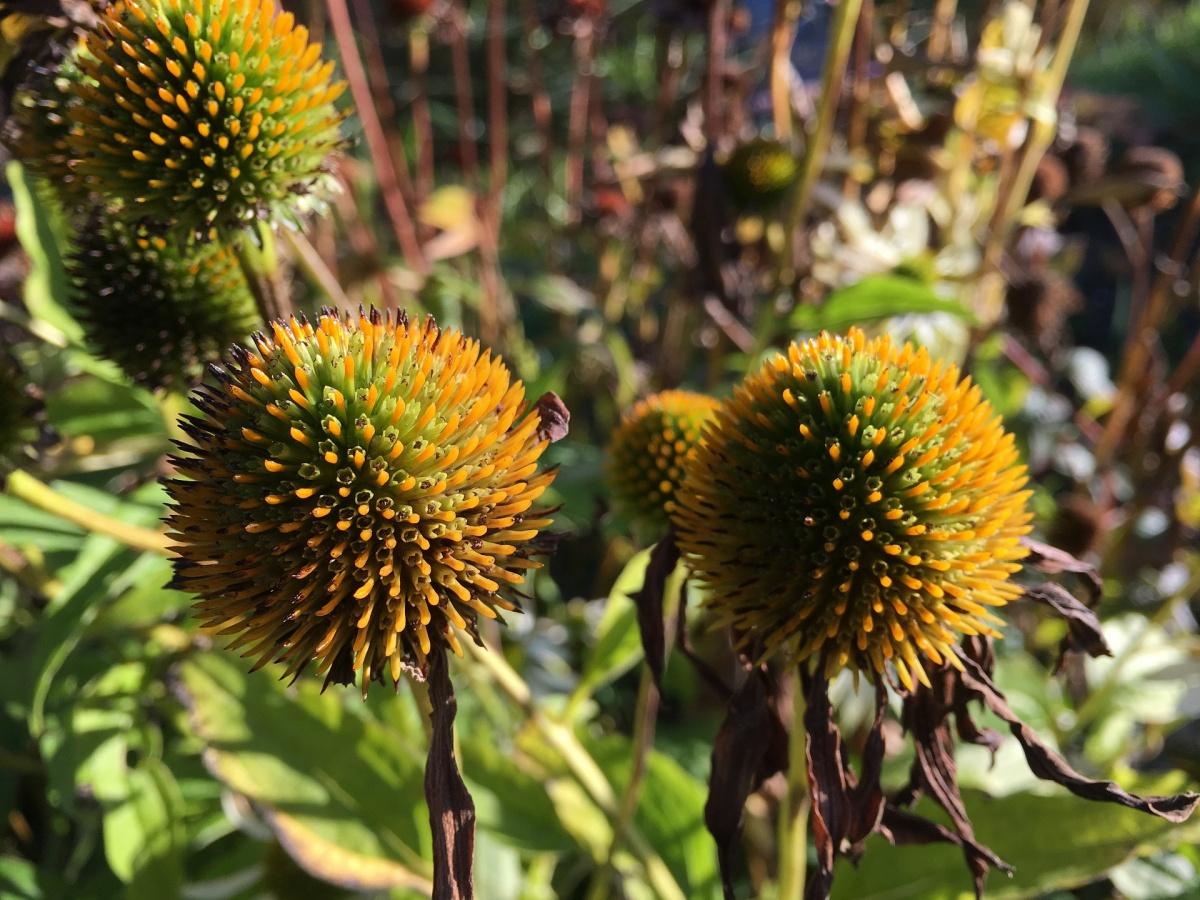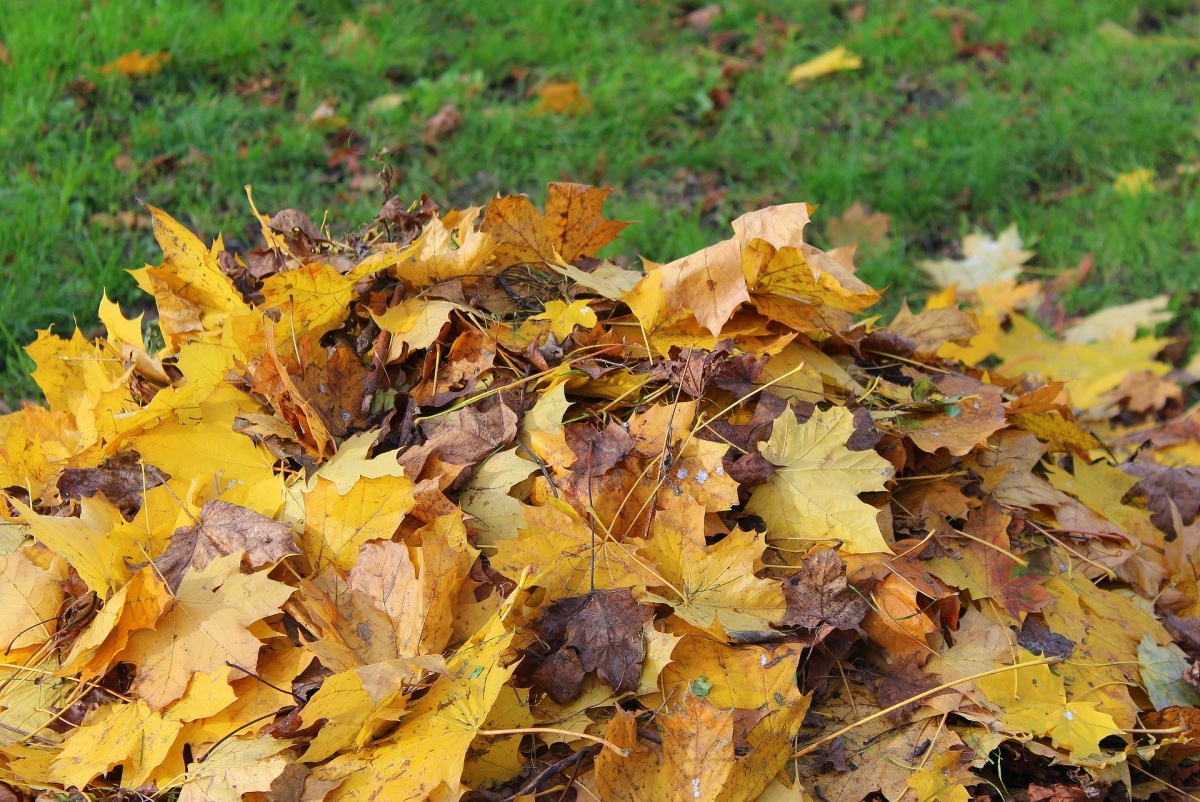October is often the month that we say goodbye to the garden and “put it to bed.” Many gardeners like to perform a garden clean-up at the end of the season before the onset of winter. Usually this means cutting back perennials, pulling up spent vegetables and annuals, and raking up leaves as they drop from the trees and shrubs. In addition, some annuals and tender bulbs can be dug up and brought indoors to use again next season, and marginally hardy perennials and evergreen shrubs can be protected to help them come through the winter without too much damage.
When you go to put your own garden to bed this fall, keep in mind the following tips.
You are watching: Putting the Garden to Bed
Fall Perennial Cutbacks
The first task most gardeners consider when preparing the garden for winter is cutting back perennials. While cutting everything to the ground may give the garden a tidy look, it does a disservice to wildlife species that can make use of some plants in the winter. Leaving perennial seed heads provides natural foraging habitat for native wildlife. In the winter months when food is scarce, gardens full of withered fruit and dried seed heads can provide birds with a reliable food source. Seed-eating songbirds such as finches, sparrows, chickadees, juncos, and jays will make use of many common garden plants. When cleaning up the garden, prioritize removing and discarding diseased top growth, but leave healthy seed heads standing.

Beyond providing habitat, limiting fall clean-up can also provide winter interest in the garden. Dried stalks and leaves add a different dimension to the garden once the snow begins to fall. In particular, ornamental grasses add color, movement, and texture to the winter landscape.
All perennials left standing for the winter should be cut to the ground in the spring before new growth starts.
Leaves
October is also the time when the majority of deciduous trees and shrubs lose their leaves. Leaves can account for a huge amount of yard waste that must be dealt with before winter to avoid smothering the lawn, promoting snow mold diseases, and encouraging rodent activity. Although fallen leaves may seem like a nuisance, they are also an incredible resource that can used as a mulch or soil amendment.

There are a few different ways of managing fallen leaves in the yard and garden.
- Rake up and compost or discard the leaves. Composting leaves is a good way to recycle nutrients, and compost can be used to improve the soil.
- Mulch the leaves in place with a lawn mower. This not only cuts down on labor, but also returns nitrogen to the soil as the chipped leaves decompose. Mulching leaves into the lawn works very well as long as it is done several times throughout the season. Once a thick layer of leaves builds up, it is nearly impossible to get all of the pieces to filter down between the grass blades. At that point, it is much easier to simply rake them up and add them to the compost.
- Save the leaves to use as mulch. Leaves can make a wonderful mulch for annual, perennial, and vegetable gardens if they are chipped into small pieces. A thick layer of chipped leaves can be just as effective at suppressing weeds and conserving soil moisture as bark mulch, and they usually break down within a season and build soil organic matter.
Pull Up Annuals and Vegetables
After the first killing frost it’s time to remove annual flowers and vegetable plants from the garden. Not only is this debris unsightly, but if left in place it can potentially contribute to disease issues next year.
Two common fungal disease of tomato, early blight and Septoria leafspot, overwinter in the soil of crop debris. Pulling up and discarding all parts of infected plants helps reduce infection the following season, particularly in small gardens that do not have much opportunity for crop rotation.
If desired, some annual plants can be successfully saved from season to season by either digging them up or taking cuttings before frost. For instance, coleus can easily be saved from year to year by potting up entire plants and keeping them indoors over the winter, or by rooting cuttings. Other plants that can be kept with relative ease include geraniums, fuchsia, lantana, begonias, and impatiens.
Dig Up Tender Bulbs
Many tender “bulbs” such as cannas, dahlias, and gladiolus can also be dug up and kept from year to year with relative ease if they are treated properly. Wait to dig up bulbs until the top growth dies back or is killed by the first frost.
- Use a garden fork or a spade to loosen the soil around the entire plant.
- Gently lift the bulbs from the ground, being careful not to cut or skin them in the process. Any damage allows disease organisms to enter, leading to rot and storage losses.
- Clean the soil from the bulbs. Swish them around in a tub of water or use a garden hose to wash away any clumps of soil before allowing them to dry and cure.
- Place the bulbs in a well-ventilated area with a constant temperature between 60 and 70° and out of direct sunlight for a few days. Always remember to label all stored bulbs.
Read more : The Perfect Way To Plant Tomato Plants – 5 Simple Secrets To Big Success!
Once the bulbs have cured, they should be packed in moistened sphagnum peat, vermiculite, or wood shavings. A little moisture goes a long way. If the storage medium is too wet, the bulbs will likely rot. The bulbs can be placed inside plastic bags or cardboard boxes and then covered with peat or vermiculite.
Protect Vulnerable Trees and Shrubs
Some perennials and shrubs can benefit from a little extra winter protection. Butterfly bush (Buddleja davidii) and bluebeard (Caryopteris sp.) don’t always make it through the winter unless they are given a defense. Sometimes all it takes is adding an extra layer of mulch over the roots to insulate them from extreme cold. Periods of freezing and thawing can also heave new plantings from the ground, and in the process exposes the roots to drying winter winds. Mulching insulates the soil and prevents frost heaving. At least two inches of woodchips, shredded leaves, or straw should be applied over the root zone, taking care not to pile mulch against the plant’s trunks and crowns.
Broad leafed evergreens, such as rhododendrons, and other marginally hardy deciduous shrubs are especially susceptible to drying out in the winter months. Even in cold weather, buds, leaves, and needles lose water in a process called transpiration. Water loss is greatest during periods of strong winds, and mild sunny weather. When the ground is frozen, water is largely unavailable to roots, and plants are unable to make up the water they’ve lost. When water is transpired faster than it is taken up, the leaves begin to desiccate and turn brown.
Shrubs such as hydrangeas and roses may produce more flowers if they are wrapped with burlap or surrounded by a cage filled with a coarse mulching material (like peat moss, shredded leaves, or weed-free straw).
Wait to Prune
Although it may be tempting to pull out the pruning saw and loppers after the leaves have fallen, it is almost always best to wait to prune trees and shrubs until late winter or early spring. By waiting to prune until late dormant season (February to early April), gardeners avoid a number of physiological and disease issues. Pruning in the fall often causes dieback at the pruning sites, as new growth at wounds is more susceptible to damage from severe winter temperatures.
When apple trees are pruned in the late dormant season, new wounds are only exposed for a short time before active growth starts and healing can begin. Some disease issues can also be avoided by pruning in the late winter or early spring. Trees are much less likely to become infected by pathogens, such as fire blight, when they are dormant because disease causing agents such as bacteria and fungi are inactive at that time of year as well.
Learn more by watching this previously recorded live video event on putting the garden to bed.
Source: https://gardencourte.com
Categories: Garden news


